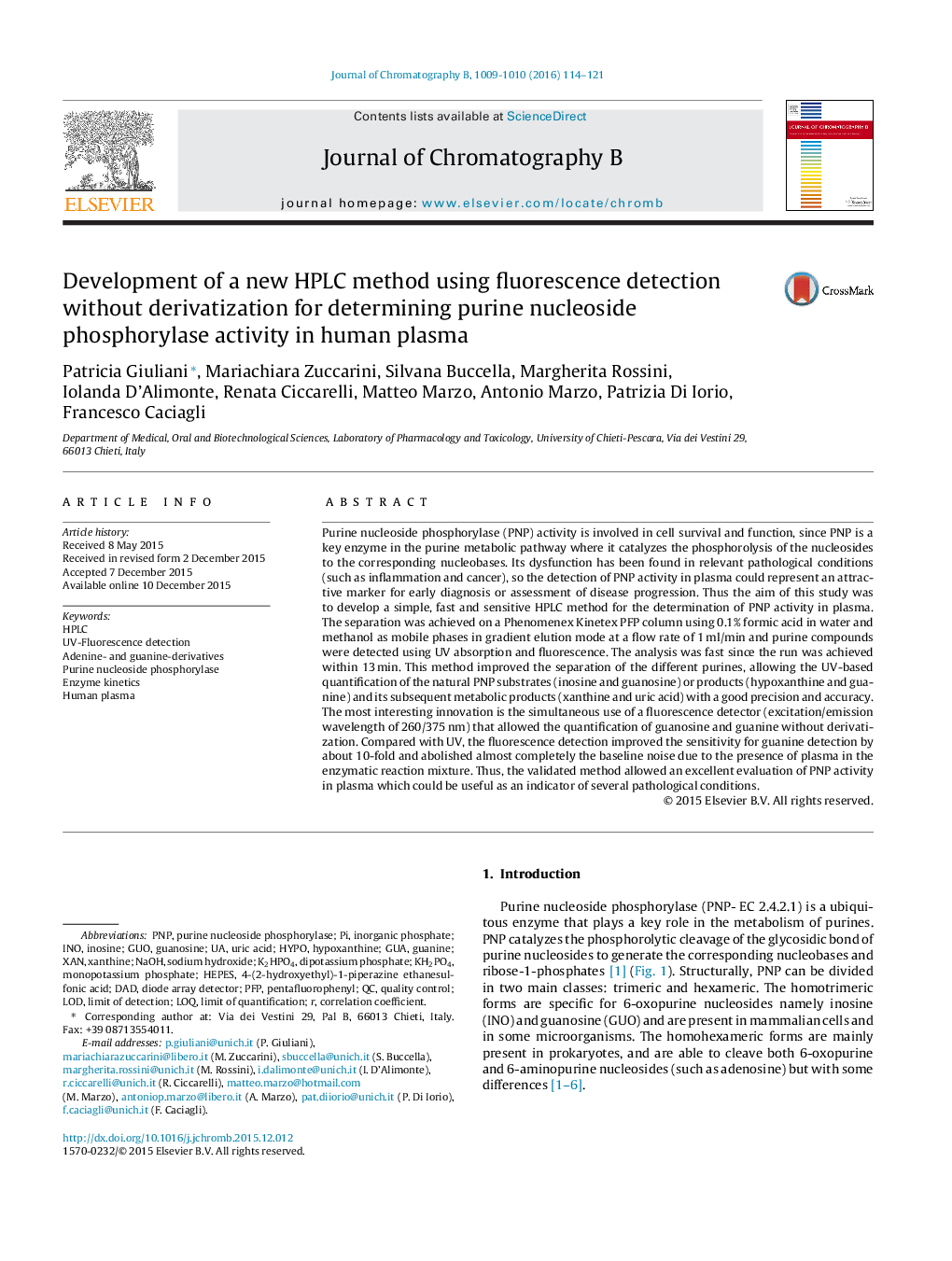| کد مقاله | کد نشریه | سال انتشار | مقاله انگلیسی | نسخه تمام متن |
|---|---|---|---|---|
| 1214742 | 1494042 | 2016 | 8 صفحه PDF | دانلود رایگان |

• HPLC method combining fluorescence and UV detection for measuring purine metabolites.
• The method was validated and proved to be fast, sensitive, specific.
• The Fluorescence detection improves the limit of detection of guanosine and guanine.
• Kinetic parameters of human plasma PNP were determined.
• This method is suitable for routine evaluation of PNP activity as possible biomarker.
Purine nucleoside phosphorylase (PNP) activity is involved in cell survival and function, since PNP is a key enzyme in the purine metabolic pathway where it catalyzes the phosphorolysis of the nucleosides to the corresponding nucleobases. Its dysfunction has been found in relevant pathological conditions (such as inflammation and cancer), so the detection of PNP activity in plasma could represent an attractive marker for early diagnosis or assessment of disease progression. Thus the aim of this study was to develop a simple, fast and sensitive HPLC method for the determination of PNP activity in plasma. The separation was achieved on a Phenomenex Kinetex PFP column using 0.1% formic acid in water and methanol as mobile phases in gradient elution mode at a flow rate of 1 ml/min and purine compounds were detected using UV absorption and fluorescence. The analysis was fast since the run was achieved within 13 min. This method improved the separation of the different purines, allowing the UV-based quantification of the natural PNP substrates (inosine and guanosine) or products (hypoxanthine and guanine) and its subsequent metabolic products (xanthine and uric acid) with a good precision and accuracy. The most interesting innovation is the simultaneous use of a fluorescence detector (excitation/emission wavelength of 260/375 nm) that allowed the quantification of guanosine and guanine without derivatization. Compared with UV, the fluorescence detection improved the sensitivity for guanine detection by about 10-fold and abolished almost completely the baseline noise due to the presence of plasma in the enzymatic reaction mixture. Thus, the validated method allowed an excellent evaluation of PNP activity in plasma which could be useful as an indicator of several pathological conditions.
Journal: Journal of Chromatography B - Volumes 1009–1010, 15 January 2016, Pages 114–121